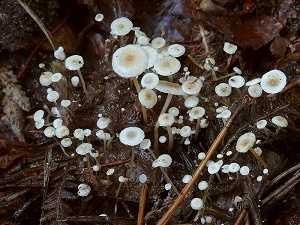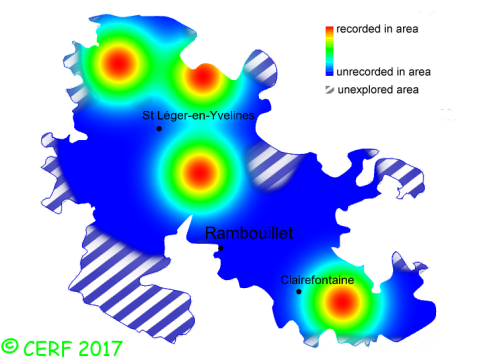| Collybia cirrhata (Pers.) Quél. |
|
|
|
|
|
|
The cap is white. The cap surface is smooth, not viscid nor sticky. The stem is white to flesh pink, without ring. The flesh is unchanging; its texture is fibrous. The gills are adnate, crowded . The spore print is white. This species is saprophytic. It grows on the ground. The fruiting period takes place from July to November.
Distinctive features : Small white cap; in troops, on the remains of other mushrooms (Lactarius, Russula), without sclerotia attached to stem base Collybia cirrhata is quite rare and localised in the forest of Rambouillet, and is frequent, more generally speaking . | ||
|
page updated on 14/01/18

